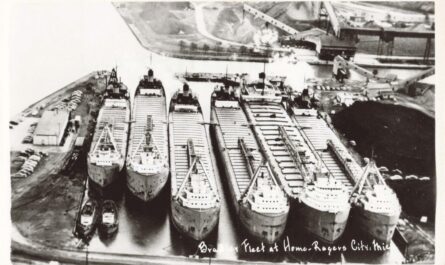In the early 20th century, the village of Onsted, Michigan, stood at a crossroads—literally and economically. Tucked into the Irish Hills of Lenawee County, it was a farming hub, a tourism waypoint, and a growing community built on rails, mills, and the draw of nearby lakes. Onsted Michigan history is an interesting study of how small towns evolved from pure farming to a mix of tourism and agriculture.
This small town, settled just a few decades earlier, had begun to define itself by the steady rhythm of trains, the chatter of dry goods customers, and the seasonal rush of vacationers escaping the city. The old postcards and early photographs tell the story of a rural Michigan town adapting to the pressures—and opportunities—of a new century.
Video
The Railroad Defined Early Onsted

By 1900, the railroad depot in Onsted was the village’s primary artery. Farmers brought wagonloads of grain to the nearby elevator. That grain fed markets in Detroit, Toledo, and Chicago. The train also carried mail, news, hardware, and the occasional city dweller headed for a cottage at Sand Lake.
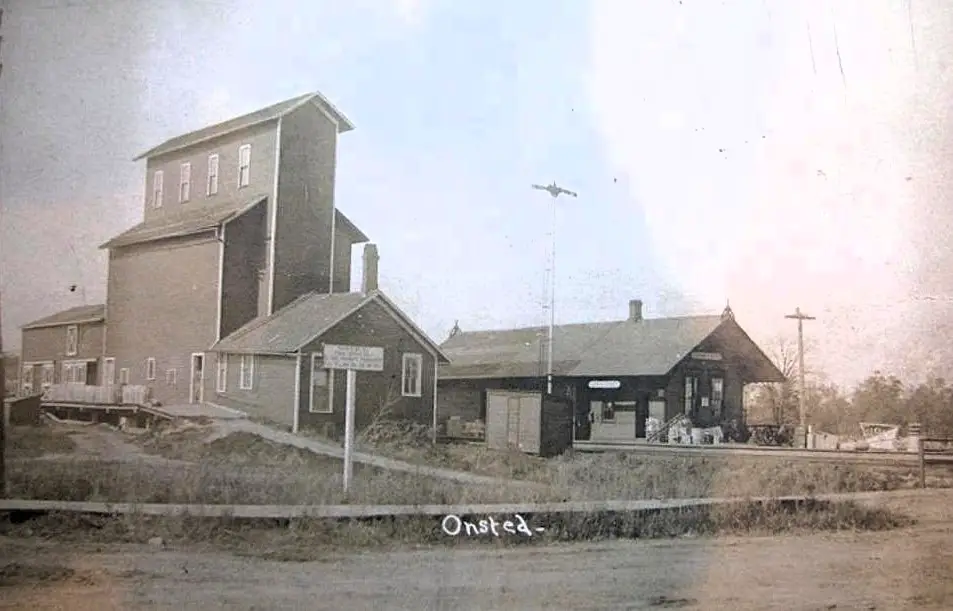
Photos from the period show the grain elevator looming over the tracks, while passengers waited on benches or stood beneath the depot’s awning. It was a small building, but it connected Onsted to the rest of the country.
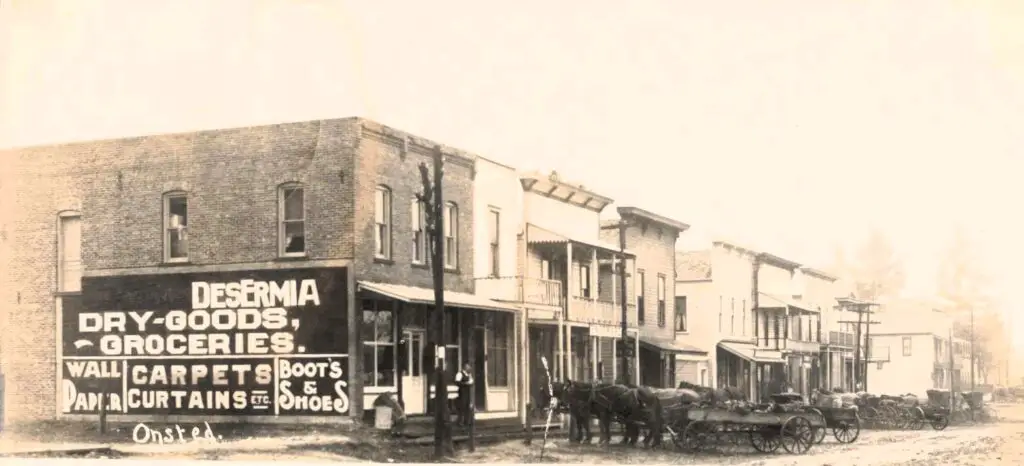
Just across from the depot, Main Street was lined with businesses that anchored community life. Desermia’s Dry Goods was one of the more prominent establishments, advertising groceries, boots, wallpaper, and curtains. The variety says a lot about how self-reliant rural towns needed to be.
Main Street Commerce and Community
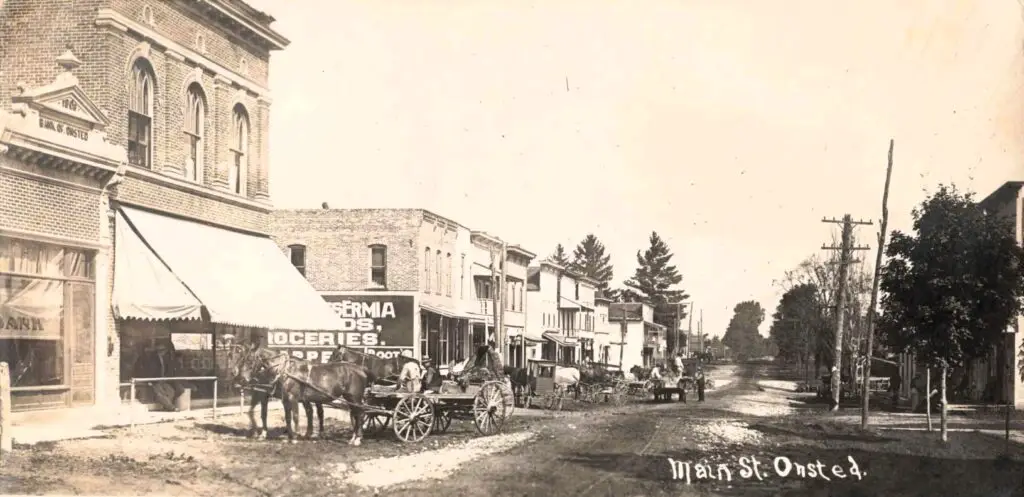
In those years, Onsted’s downtown was active and built for utility. There was a bank made of brick, a general store, a few saloons, and wooden sidewalks that filled with wagons and horses on market days. The brick buildings gave the village a sense of permanence, even as the town itself remained small.
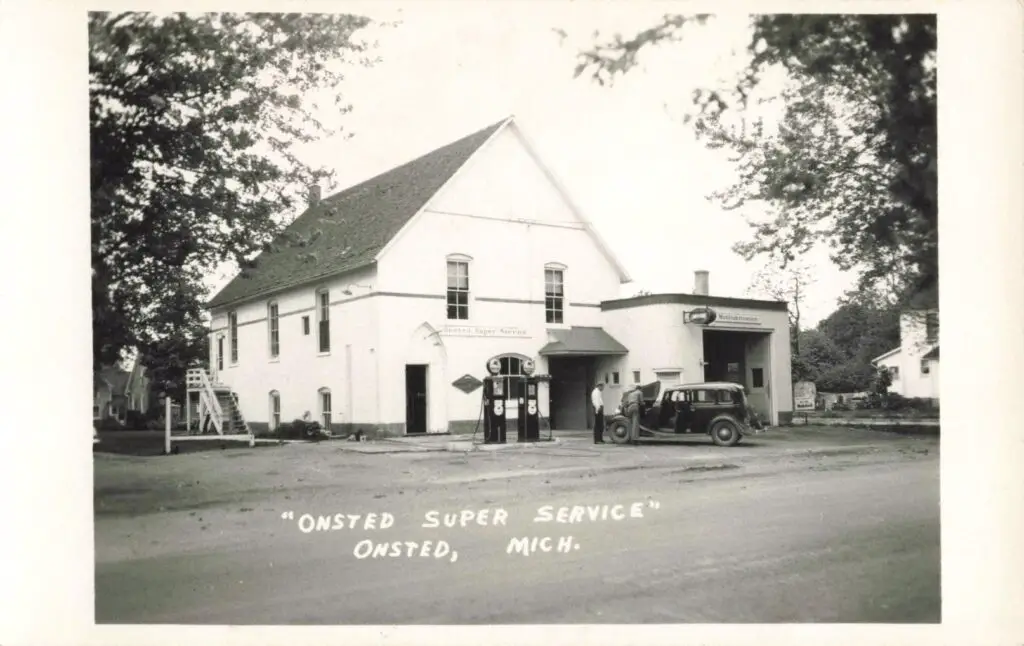
By the 1920s and ’30s, Onsted was already changing. The rise of the automobile brought new infrastructure. The Onsted Super Service Station appeared at a major corner. Local men pumped gas, checked oil, and repaired vehicles—work that replaced blacksmithing as an essential service.
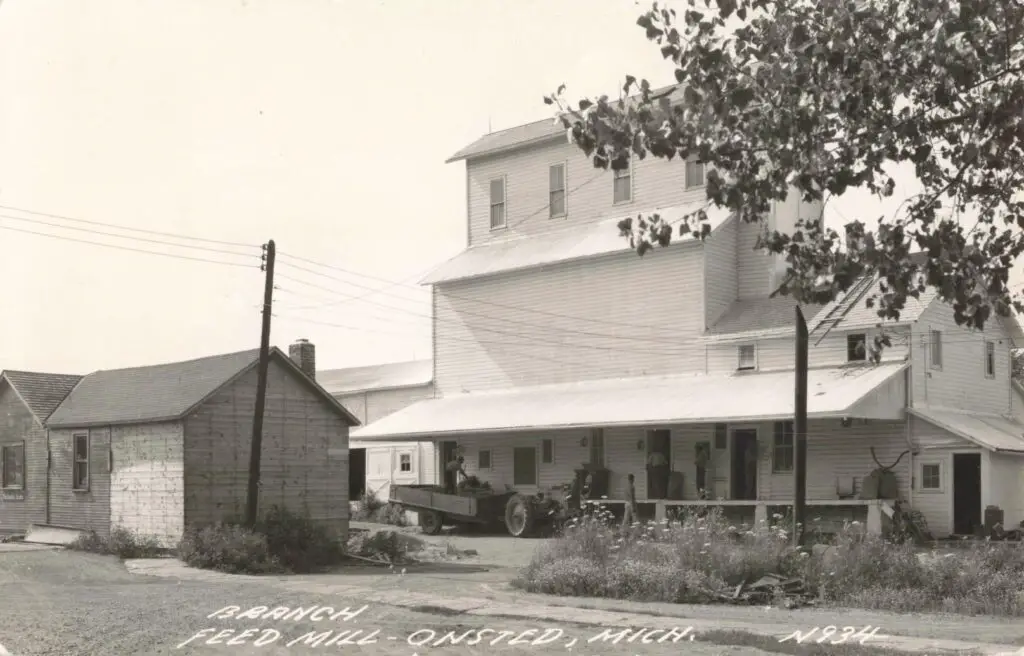
The Branch Feed Mill, however, remained busy throughout these changes. The feed business helped support small-scale livestock farming in the area, and the mill building became a staple of the town’s skyline.
Sand Lake and the Rise of Tourism
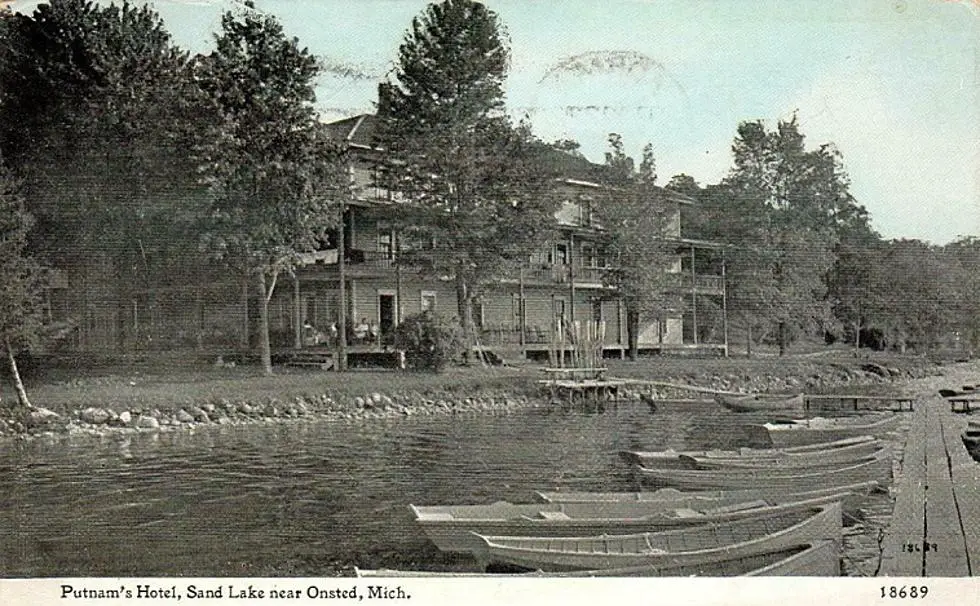
North of town, Sand Lake became an attraction for city families seeking cool breezes and quiet weekends. Putnam’s Hotel sat right on the shoreline, with rows of flat-bottomed rowboats tied up along the dock. Guests fished, swam, and rested on the veranda. Some postcards from the era even show children posing with their catches or families gathered at the lake’s edge for group photos.

Just a few miles east, along what is now M-50, the Springville Inn catered to travelers moving through the region. Its tall white pillars made it easy to spot. The inn provided meals and lodging for those passing between Detroit and Chicago—or for families who had just spent the afternoon at Hayes State Park or Wamplers Lake.
The Irish Hills Towers: Rivalry at 1,200 Feet
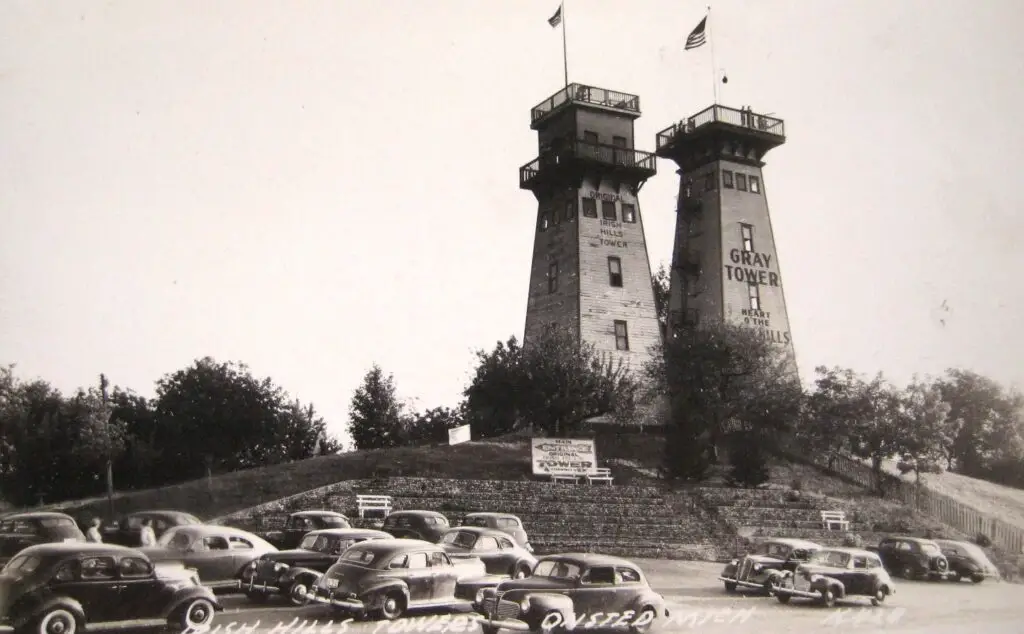
Without mentioning the Irish Hills Towers, no story about Onsted and the Irish Hills would be complete. Built in 1924 and 1927, these twin observatories were a product of ambition and petty rivalry. The first, the Original Irish Hills Tower, was quickly matched by the Gray Tower just 12 feet away. Both claimed to offer the region’s best view, and both charged admission.
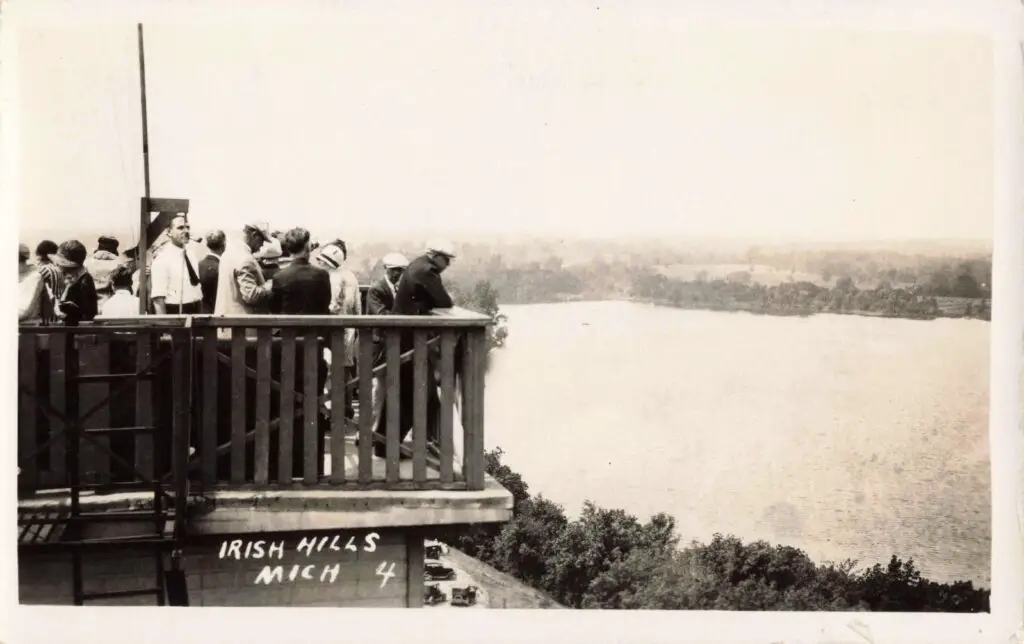
For decades, tourists stopped along U.S. 12 to climb the towers and take in the rolling hills, glacial lakes, and patchwork farmland that defined the area. Eventually, the towers were joined by a catwalk and run as a single attraction.
Even though the towers were closed in 2000 due to safety issues, preservation groups continue to work toward restoring them. Today, their silhouette still marks the ridge and remains one of the most iconic features in southern Michigan.
Onsted Michigan History is More Than Holding On to the Past

In the quiet parts of Onsted, there are still signs of the town’s past. The old water-powered mill stands near a shaded pond, its structure weathered but intact. The former bank building now shares a corner with what used to be Turner’s Drug Store, where locals once bought fountain sodas and small-town gossip.
Even with progress, the layout of the town hasn’t changed much. Streets still follow the same grid. Some of the older buildings still serve their original purpose. Others have been repurposed or left to memory.
Why Onsted Still Matters
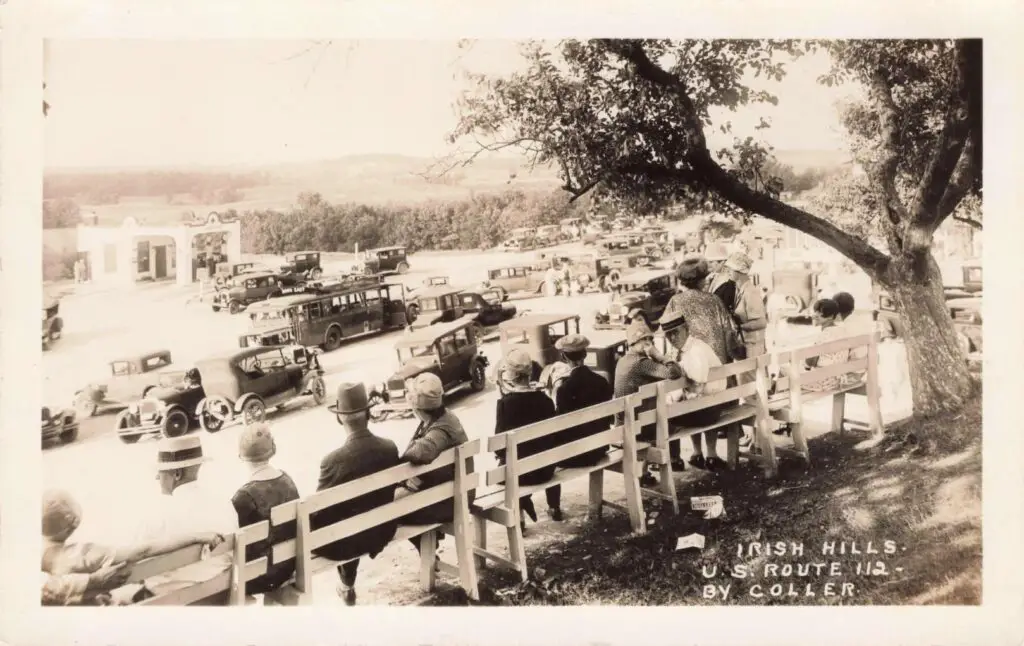
For visitors driving through the Irish Hills, Onsted might seem like just another village along a scenic highway. But for those who look closer, the town’s history is easy to find. Whether it’s the remnants of a hotel dock on Sand Lake, the shadow of a train line, or the quiet hum of a working feed mill, the signs of life from over a century ago are still here.
Onsted’s story is one of small but steady change. It thrived not because it chased trends, but because it held onto its strengths—its lakes, its land, and its link to the wider world through rail and road.
If you’re ever near U.S. 12 or heading through the Irish Hills, stop and take a look. Onsted’s past isn’t hidden—it’s just waiting to be remembered.
